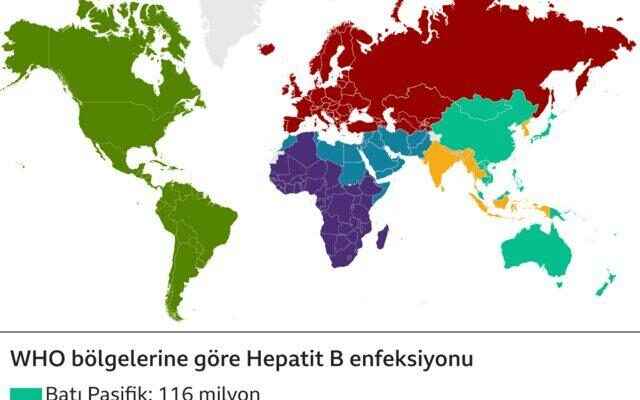“I thought I was going to die, I was so scared and sad,” says Lien Tran, who lives in Vietnam, of being diagnosed with hepatitis B at the age of 18.
But 20 years after his diagnosis, Lien now struggles with preconceptions about the disease, explaining that a diagnosis is not synonymous with death.
Types of hepatitis known as liver inflammation A, B, C, D and E are transmitted by viral infection.
Chronic infection of hepatitis B and C can develop into cirrhosis or liver cancer.
According to the World Health Organization (WHO), one person dies every 30 seconds from viral hepatitis.
One million people died because of it last year. This number is more than the combined deaths from HIV and malaria.
WHO reports that 350 million people in the world still live with different types of hepatitis diseases.
July 28 was declared World Hepatitis Day to raise awareness and sensitivity to the disease.
SYMPTOMS OF THE DISEASE
Although hepatitis is generally transmitted by viral infection, some chemicals, alcohol, drugs and genetic disorders can also cause this disease.
Some patients, such as Lien, may not show any symptoms at first, and in some cases it may take years for the effects to appear.
The U.S. Centers for Disease Control and Prevention lists symptoms of the disease as follows: fever, fatigue, loss of appetite, dizziness, vomiting, abdominal pain, dark urine, light-colored stools, joint pain, and jaundice.
Lien was born into a poor family in a small village in Hanoi, the capital of Vietnam.
While studying biology at university, she won a scholarship to continue her studies in Europe.
While doing the necessary medical tests, he learned that he had hepatitis B.
That’s why he couldn’t go to Europe; however, he did his best to ensure that his diagnosis did not yield to prejudices:
“Hepatitis is referred to as a dirty thing, people pair it with HIV.”

TRANSMITTED FROM MOTHER TO CHILD
Unsatisfied with the doctor’s information, Lien researched the disease more on the internet.
After graduation, she ensured that her mother had the same test, and her mother also tested positive. Since her mother knew this beforehand, she blamed herself for not giving this information to her daughter.
According to Lien, it’s likely that her mother has had the disease since she was pregnant with her.
Unlike Lien, her mother has to take antiviral medication every day and is subject to constant health checks.
According to the WHO, hepatitis A and E are transmitted through contaminated water and food; B, C and D are transmitted through bodily fluids.
The ways B, C and D can be transmitted are as follows: Contact with blood or blood transfusion, medical operations in which the infection is spread, sexual intercourse, birth from mother to child.

VACCINE PROTECTS
Being a mother of two, Lien also had her daughters vaccinated against hepatitis; Now both of her children are negative.
It is possible to be vaccinated against hepatitis A and B.
The hepatitis B vaccine is also known to prevent future hepatitis D.
The hepatitis E vaccine is only available in China.
Recently, liver problems have become more common in children due to unexplained reasons.
That’s why doctors emphasize the need to increase awareness about hepatitis.
Lien, on the other hand, started volunteering after moving to Australia to increase susceptibility to this disease.
Lien, who came to Melbourne, Australia for her doctoral studies, now shares her story with other patients.
Lien, 38, emphasizes that hepatitis is an easily manageable disease, and that you need to go to the doctor and take the necessary medications:
“You can live with hepatitis and lead a very good life both personally and professionally. Now that I can talk openly about it, I feel free.”
